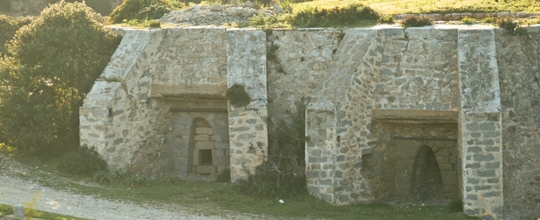

The Kiln
The lime industry was present in the large Gulf of Olbia, which encompasses the sea between Capo Figari and the island of Tavolara, throughout the 1800s up until a few decades ago. Capo Figari, like Tavolara, is largely made up of limestone from which lime can be extracted for use in the building industry. There were numerous kilns in the Gulf and today, we can still see the two built at Moresca Bay, another at the end of the railway line, and yet another almost destroyed at Corallo Bay. The stone extracted from the quarry at Greca Bay was loaded onto boats due to it being easier to approach the shore there; the stone extracted from the valley of Moresca Bay was transported away by train. The lime industry was highly developed up until the 1950s. Behind Moresca Bay there is an iron cylinder that stands in the midst of this beautiful lush valley. This is what remains as testimony of an experiment which was technologically advanced for its time, which never came to fruition. The cylinder is nothing but an electric furnace used for the baking of limestone, which was not used for long, and was unable to go into full production to repay its investment. Access to this plant is prohibited. However, if accompanied by a guide it is possible to visit the two furnaces of Moresca Bay where the guide can explain how the different tools were used, a truly interesting experience.
The above historical data is taken from the book "Figari storie del Golfo e di Golfo Aranci" by Mario Spanu Babay. Publisher Taphros Olbia. Published in 2005. All rights reserved. May not be reproduced or distributed without express written permission from the author.